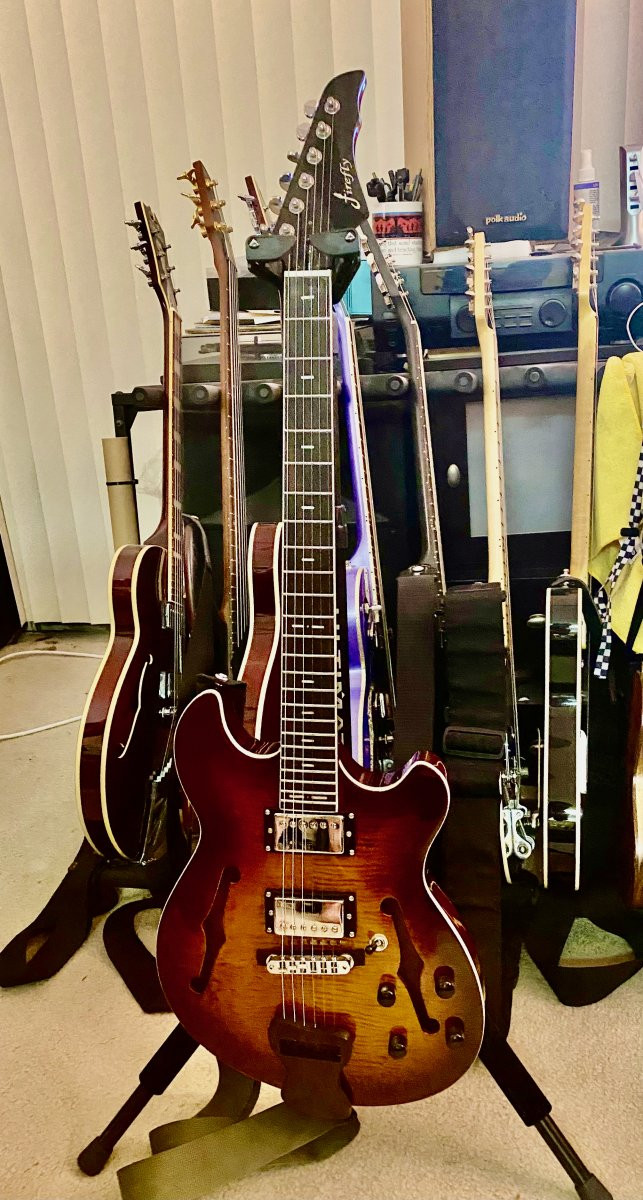My brother’s penchant for surprise gifts recently manifested as a guitar delivery – the Firefly Pegasus. Apparently, after gauging my interest in various gear, he decided this Paul Languedoc-inspired instrument would be a worthy addition to my collection. While jam bands like Phish and the Grateful Dead aren’t my usual listening, the association with Trey Anastasio and his iconic guitars piqued my curiosity.
Information on the Firefly Pegasus seems scarce online, echoing the limited mentions I’ve found in guitar forums like TDPRI. This scarcity is surprising, especially considering other similar models from overseas can command prices ten times higher. This Firefly version clearly aims to offer Languedoc aesthetics and vibe at a fraction of the cost.
Initial inspection reveals impressive workmanship for the price point. My only immediate critiques are the neck binding’s sharp 90-degree edge, which I plan to refine for a more comfortable rolled feel, and a slightly overtightened truss rod, causing a minor back-bow, easily remedied with a truss rod adjustment. However, the guitar arrived with perfect intonation straight out of the box.
 Firefly Pegasus electric guitar showcasing its body shape and design, a Languedoc inspired model with a focus on affordable quality and unique aesthetics.
Firefly Pegasus electric guitar showcasing its body shape and design, a Languedoc inspired model with a focus on affordable quality and unique aesthetics.
The fretwork is genuinely exceptional – arguably the best I’ve encountered on any factory-produced guitar. The frets are uniformly leveled, crowned, and polished, with beautifully finished, smooth fret ends. The fret material remains unidentified, so monitoring for wear will be necessary over time.
Tonally, my exploration has been limited to a headphone amp setup using a Fender Mustang Micro. The Firefly Pegasus demonstrates a respectable tonal palette, suggesting potential for diverse sounds. However, electronics upgrades might be considered down the line to further refine and enhance its sonic capabilities.
I’m keen to hear from others who have experience with the Firefly Pegasus Electric Guitar. What are your impressions, modifications, or insights on this intriguing and affordable instrument?
